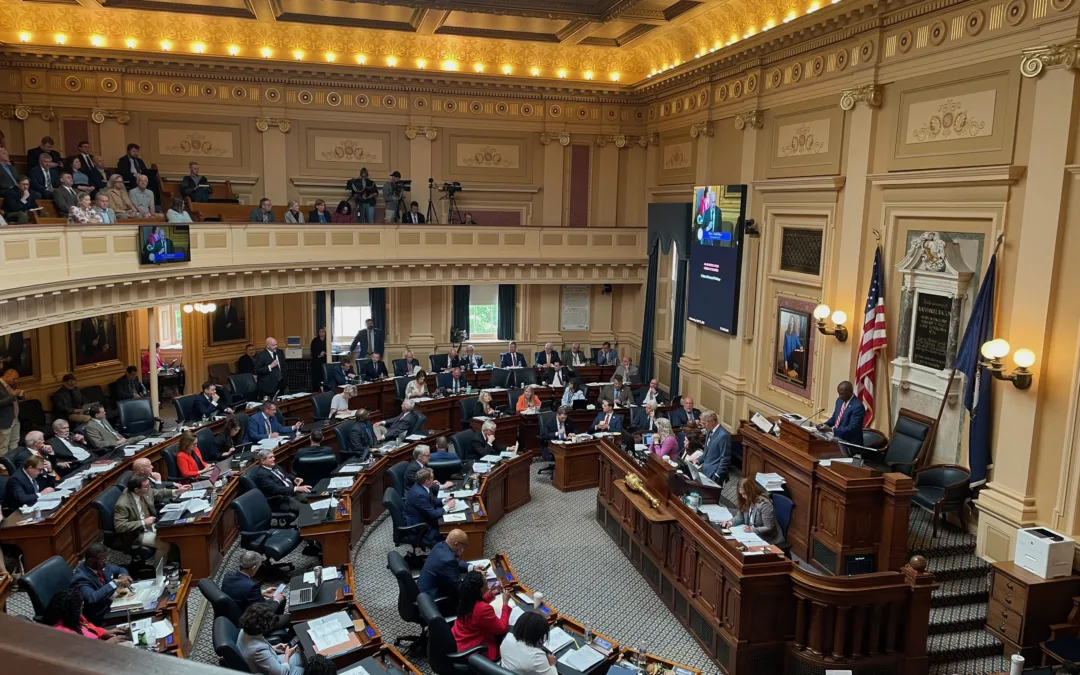
State officials launched a new tool Monday, one designed to help districts decide if they should return to in-person learning
RICHMOND-Is it safe for Virginia students to attend class in person? That depends on which school district you live in. The Virginia Health Department launched a project Monday morning that’s designed to help answer that question.
Their Pandemic Metrics Dashboard provides details about COVID-19 cases in each specific city or county district. That includes not just the current number of cases, but how that’s changed over the last seven days. If cases in the City of Staunton fell 51% over the last week, you can find that on the dashboard. If you want to know how many people in Martinsville are hospitalized with the virus, that’s available too. There’s also a color-coded map of the different districts, so you can see what neighboring schools are dealing with.
“Communities across the Commonwealth are facing different challenges as we all continue to battle the COVID-19 pandemic,” Virginia State Health Commissioner M. Norman Oliver said in Monday’s press conference. “This pandemic dashboard provides data for communities to individualize and tailor response efforts to local needs. A community where cases are surging and hospital beds are filling up, for example, will require different response efforts from those in a community where cases are declining.”
The news comes as several school boards face decisions on which option to take. Do they remain virtual and keep students at home? Or do they bring those students back to the buildings? It’s a decision made harder by the news last week that a teenager in the Southside Health District died of COVID-19. That marks the first person under 18 to die from the virus in Virginia. Southside Health District covers Brunswick, Halifax and Mecklenburg counties. The state’s overall rising death toll also raises concerns for state officials.
Where Did The Data Come From?
But in this discussion, it’s important to note what the data does and doesn’t say. Virginia officials took the system from guidelines laid out by the Centers for Disease Control. The CDC guidelines, which were updated Sept. 15, rank districts on a scale from lowest risk of infection to highest risk. But a school’s negative rank doesn’t mean it has to close, just like a positive one doesn’t mean doors have to swing wide open.
“If, after applying the core indicators, a school is at “medium,” “higher,” or “highest” risk of transmission, it does not mean that the school cannot re-open for in-person learning,” the CDC guidelines state. “[It means] the risk of introduction and subsequent transmission of SARS-CoV-2 is higher and the school could consider alternative learning models (e.g., mix of in-person and virtual learning, also known as hybrid learning, or virtual-only).”
The core indicators referenced by the CDC are pretty clear. First, a district is measured based on the number of new cases per 100,000 people over the last 14 days. Now, let’s be clear. Many Virginia districts don’t have 100,000 people living there. But, in order so that every district can be compared, the state estimates for those under the 100,000 mark. That means if you have an average of 8 cases with 23,000 people living nearby, the state projects to what that would be if you had 100,000 residents.
If a district has less than 5 cases in two weeks, it’s in the lowest risk category. Between 5 to 19 cases ranks as low risk. A total of 20 to 49 comes in as moderate, while 50 to 199 is higher risk. Anything above 199 cases falls in the highest risk category.
District’s Other Indicators Factor In
Two other indicators make up the district’s rank. The state looks at the percentage of COVID-19 tests that came back positive over the last two weeks. Less than 3% falls into lowest risk, while 3% to 4% is considered low. Between 5% to 7% positive ranks as moderate, with 8% to 9% as high risk. Anything above 9% falls into the highest risk category.
Finally, the district is graded on five criteria to get the third indicator. Are all students and faculty wearing masks? Are they practicing social distancing? What about washing hands, cleaning and disinfecting or contact tracing?
All of these things add up to create the district’s rank. At that point, Health Dept. officials say it’s still up to local leaders about what to do. However, they advise that people let the data shape their decisions.
“VDH recommends that decisions to alter K-12 school programming, including decisions about in-person instruction, school dismissals or closures be handled at the most local level possible,” Health officials said in a statement. They urged schools to consider “both regional and local epidemiology, community characteristics and local capacity,” when deciding if kids should return to school.
Brian Carlton is Dogwood’s managing editor. He can be reached at [email protected]
Politics

Youngkin, Democrats to start over on budget talks
The Republican governor stood with Democratic leaders in the General Assembly on Wednesday in a bid to ease tensions over their budget debate....

VIDEO: Domestic abuse victims speak out against the gun law bills Gov. Glenn Youngkin vetoed
Senate Bill 47 and House Bill 46 aim to close the loophole that allows offenders to transfer their firearms to someone else instead of relinquishing...
Local News

Virginia verses: Celebrating 5 poetic icons for National Poetry Month
There’s no shortage of great writers when it comes to our commonwealth. From the haunting verses of Edgar Allan Poe, who found solace in Richmond's...

Join the fun: Recapping Family Literacy Night’s storybook adventures
When’s the last time you read a book aloud with a loved one? If it’s difficult to answer that question, then maybe it’s time to dust off that TBR...




